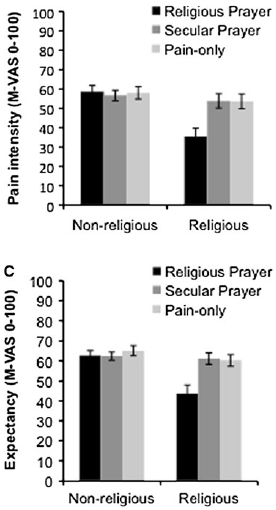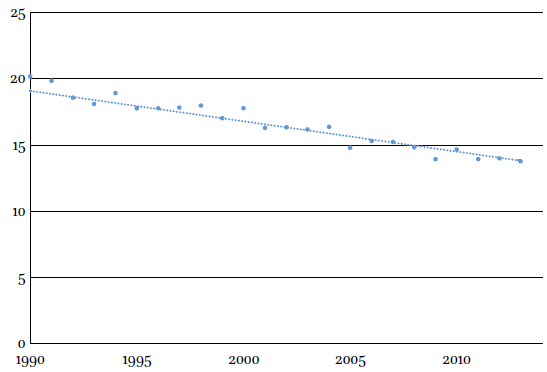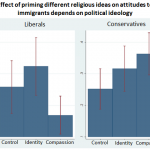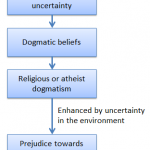Prayer seems to work as a form of pain relief – but is this a physiological response, or is it purely psychological? To investigate this, Else-Marie Elmholdt Jegindø and colleagues from the Danish Pain Research Centre in Aarhus, Denmark strapped electrodes to the legs of 20 religious and 20 non-religious volunteers.
By administering a carefully calibrated shock, electrodes like this can deliver a 5-minutes long burst of sharp pain, but without causing any damage.
Participants were asked either to recite a prayer including the line “Dear God, I pray that you will help to relieve the pain and give me good health” or to recite a similar request to a generic nobody (“Mr Hansen”). Some were not given any instructions, and just sat and endured the pain.
As you can see from the graphic, the only group that reported reduced pain was the religious group who recited a prayer. Across all groups, each individual’s expectations about how bad the pain would be were a good predictor of how bad the pain felt.
However, for the religious group reciting a prayer (and that group alone), the amount of pain they reported was also influenced by how strong was their desire for pain relief.
So these results show that religious people (and the religious people in this study were highly religious) feel – or at least report – less pain as a result of prayer, but especially if they really want it to happen.
So much for the psychology, what about the physiology? Well, Jegindø and the team also measured a bunch of physiological markers of pain – things like heart rate, blood pressure, breathing rate etc.
On the whole, they didn’t find much. Although the religious people reported less pain while reciting prayers, their bodies reacted pretty much the same.
However, religious people reading prayers did have a lower breathing rate. That’s interesting, because a similar effect has been reported for people meditating. It’s a tantalising comparison, although Jegindø warns that these data are very preliminary and should not be over-interpreted.
All-in-all, this new study supports previous studies showing that religion can give pain relief through a kind of placebo effect.
But what’s new is that the physiological stress seems to be just as high. It’s just that the people who pray and who want it to work say that, well, it really does work!
![]()
Jegindø EM, Vase L, Skewes JC, Terkelsen AJ, Hansen J, Geertz AW, Roepstorff A, & Jensen TS (2012). Expectations contribute to reduced pain levels during prayer in highly religious participants. Journal of behavioral medicine PMID: 22772583
 This article by Tom Rees was first published on Epiphenom. It is licensed under Creative Commons.
This article by Tom Rees was first published on Epiphenom. It is licensed under Creative Commons.















